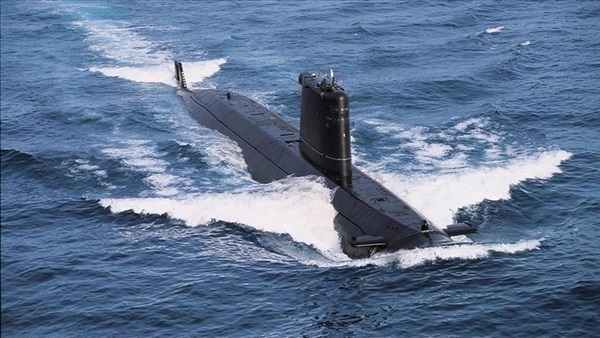Iran Plans Submarine Expansion in Persian Gulf, Raising Risk of U.S. Clash

Iran is planning to expand its submarine fleet amid continued maritime tensions with the U.S., Israel and other powers as President Joe Biden pushes for a diplomatic thaw between Washington, D.C. and Tehran despite regional violence.
Rear-Admiral Amir Rastegari, the
head of the Defense Ministry's marine industries organization arm, told the
state-run IRNA on Monday that the navy is planning to provide "light and
semi-heavy domestically-developed submarines" to the elite Islamic
Revolutionary Guard Corps (IRGC).
The IRGC maritime area of
responsibility is the Persian Gulf stretching to the Strait of Hormuz,
Rastegari said. Iran's navy oversees the eastern portion of the Strait of
Hormuz into the Indian Ocean.
Rastegari said construction of the
new submarines would begin this year, though did not offer any details on their
capabilities nor a specific date by which they would be operational. IRNA
reported they would be ready "within the next few years."
Rastegari told the news agency
that the reliance of Iran's armed forces on foreign marine technology has
decreased from 70 percent to 20 percent. Iran was under a tight arms embargo
until last year, and remains under a range of American sanctions. These
measures have stifled its economy and choked imports and exports.
Between them, Iran's navy and the
IRGC have a force of around 34 submarines, according to the Nuclear Threat
Initiative nonprofit. Of these, 27 are mini-submarines, with the remaining
seven diesel-electric attack submarines.
Though still technologically
limited compared with its American rivals, Iran has invested in modernizing and
expanding its submarine fleet, which can now fire ballistic and cruise missiles.
In 2018, just before former
President Donald Trump withdrew from the Joint Comprehensive Plan of Action
nuclear deal, Iranian officials informed the United Nations it was planning to
"construct naval nuclear propulsion in the future."
Iran has traditionally relied on
submarine imports from Russia, China and North Korea. Its most advanced are the
three Tareq-class diesel-electric submarines—Cold War-era Kilo-class submarines
imported from Russia. USNI News reported in January that all three vessels were
out of the water at once for unknown reasons.
Iran already makes its own
submarines, for example the semi-heavy, diesel-electric Besat-class submarine, of
which one has so far been produced. Iran has also built its own smaller
vessels, such as the Fateh-class diesel-electric coastal submarines,
Nahang-class mini-submarines and Ghadir-class mini-submarines.
Any naval expansion in the Persian
Gulf risks more encounters with American vessels, which routinely operate in
the waterway. The Gulf carries great strategic importance, with some 25 percent
of the world's crude oil traveling through the 30 mile-wide Hormuz Strait.
The waterway would be a key
battlefield in any future U.S.-Iran conflict, with Tehran likely to use
asymmetric warfare tactics to try and bog down the vastly superior U.S. Navy.
Fast-attack boats, mines, anti-ship missiles, cyber attacks, suicide operations
and submarine strikes would all be options for the Iranian side.
The tensions of recent years have
seen multiple attacks on commercial shipping in the Gulf. Iranian and Israeli
forces have been accused of recent covert attacks on shipping, while American
and Iranian personnel have come into confrontation several times.
In 2016, for example, Iranian
forces briefly detained two U.S. fast assault craft and 10 sailors near the
Gulf's Farsi Island.
Both Iran and the U.S. seek to
project naval power in the Gulf. The U.S. sends submarines and aircraft
carriers to transit the waterway to assert American power and the rights of
international shipping.
In late 2020, for example, the USS Nimitz aircraft carrier and USS Georgia guided-missile submarine were sent to the Gulf amid rising tensions between Tehran and Trump's outgoing administration.





